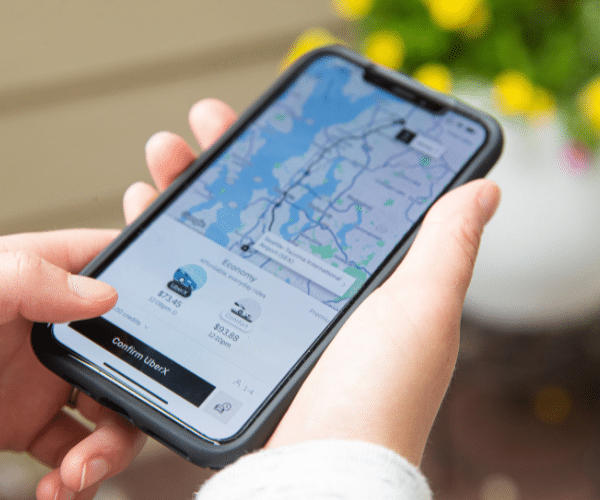
- field service dispatch
- Field Service Management
- Field Service Software
Can Uber-like scheduling management apply to Field Service Dispatch?
A couple of months ago, I had the chance to dine with the CEO of a successful service company. I found the occasion extremely valuable as he had profound knowledge of his industry, and offered up thought provoking insights.
One bold thought shared during this encounter really stuck with me. In his opinion, scheduling and dispatch are an ‘outdated’ process that fail to meet modern customers’ expectations. His point came from reflecting on how easy companies like Uber had made the customer experience. This got me thinking, what would it take to apply the “Uber-like” experience to field service dispatch.
As an aside, a couple of years ago, I contributed to a startup launch with this exact aim in mind: duplicating the Uber-like experience for the service industry. In our case, it was plumbing, electrical, and locksmithing services for residential customers. I know firsthand the challenges that come with trying to implement such an experience for the customers but also for the provider in a field service organization.
Key elements of an Uber-like experience
Whenever questioning a market issue, you must ask yourself: is this something the market actually wants or is it just hype? According to this study there is little doubt that Uber, but also Amazon and other players from the on-demand economy have transformed the way customers are looking at ordering goods and services.
Then the question becomes: can you do it? And, if so, how?
The first step we need to take to answer these questions is to define the key elements of an Uber-like experience:
- Ease of order: you have very few details to enter, as the app geolocates you;
- Instant result: you don’t call a call-center or a customer service representative, you initiate a request and you get a driver assigned to you in as short as a matter of seconds;
- Constant updates: if the drivers are running late, you are notified and you can see where they are on a map and how far they are from you;
- Streamlined experience: all Uber drivers theoretically deliver the exact same experience;
- Transparency: you know the price you will pay beforehand;
- It is a cashless experience.
Let’s focus on the first two elements: ease of order and instant result. Can these be replicated effectively in the context of a field service operation, like the installation of a device at a customer’s home or business? In theory, the answer could be yes: once you are capable of presenting your packaged product (Internet bundle, Contractual maintenance) and efficiently assign a suitable technician or team based on criteria such as location and skills, there’s no barrier to offering an instant schedule to the customer after an easy ordering experience.
At this point, I’d like to share two thoughts:
- If you’re a leader in a service organization, the question is: are you there yet? Are you 100% sure your organization has reached this point of maturity where any incoming request will be properly qualified and routed to the right technician in the field? This is a tricky question. We’ll further develop what I call the qualification challenge.
- What exactly do we mean by “instant schedule”? The Uber-like experience means a driver is assigned to you in a matter of minutes. But, all other considerations aside, this is achieved by having many drivers available (meaning: they are just waiting and doing nothing). That is also a question worth considering, which I will call the workforce structure challenge.
The qualification challenge
As we dive into the Uber-like experience, I think it is important to recognize that despite the undeniable disruption Uber brought to the market, the industry is not very complex. The fundamental challenge of transportation—getting from point A to point B at a specified time—is inherently straightforward. Even with additional criteria, such as preferred vehicle type or additional stops, the core task remains simple: connect a rider with a driver to facilitate a journey.
All of these criteria can easily be pre-qualified with a simple form, because they are a wish-list from the customer. Worst-case scenario, there isn’t a driver available to deliver fully on the expected experience and the rider will go back and remove some criteria from the wish-list.
This is very different in a field service job, where many considerations influencing qualification simply cannot be provided by the customer:
- Sometimes, even the most basic need might be hard for the customer to explain. For instance, If a customer’s furnace stops working and it’s 0 degrees outside, they don’t want to spend time explaining the situation in detail – they just want it fixed;
- Even without the emergency, sometimes there is a technical aspect the customer is not aware of. Take the example of the installation of residential internet: you need to know if you have a drop already, if not you need to know if this is going to be an aerial or an underground drop, if the home is tied to a LCP or not, etc. You certainly can’t expect the customer to know all of this beforehand;
- In the Uber-like experience, you agree to get in the car of someone you don’t know. This is not an easy move and Uber invested a lot in building trust in its service and drivers. But in a field service job, you let that stranger enter your home or your place of business. This is even harder and sometimes requires a back and forth conversation, like when the technician needs to access a secured facility.
These examples illustrate how different a field service job is from a ride request. My intention is not to say that it is impossible to provide an Uber-like experience – in fact I strongly believe it is possible – but rather to outline all the difficulties: Uber disrupted a space where the delivery should be easy by making it actually easy for the customer. Field service companies exist because they operate in a space where delivery is not easy and requires a complex qualification process that cannot be transferred onto the customer.
When we launched the start-up I mentioned earlier, we had great ambitions at the beginning, and we believed every job could be ordered online. After kick-off, the reality was very different and we understood that only a portion of the services could be ordered 100% online with no human interactions. These were mostly urgent but simple requests: you’re locked out of your apartment and you need a locksmith to open the door for you; or your toilet is leaking and you need it fixed before it damages your bathroom, etc.
The workforce structure challenge.
Another key consideration of the Uber-like experience is how it would impact the workforce needed. An asset of Uber is the high-availability of the drivers. When they were opening cities, their initial investment was directed toward “hiring” drivers. That is because in order to deliver on the promise of an instant result for a ride request, you have to make sure you will have a high density of available drivers.
Let’s dive into the Uber workforce structure:
- It consists of independent workers who are neither W-2 nor 1099 employees; they are entirely independent service providers. Uber serves as the platform where supply and demand intersect.
- There are limited requirements when it comes to required skills or qualifications: even though Uber has a qualification and training process, the basic requirement is to have a driver’s license.
- Availability is unpredictable: there is no guarantee that the drivers will ‘show up for work’ which reinforces the need for oversizing the workforce in order to ensure there will always be drivers available,
- It is versatile by nature: many drivers ‘work’ for several platforms at once.
The second component is critical in my opinion, as most field service jobs require a level of skills and qualification far beyond holding a driver’s license. Many field service companies are facing a talent shortage, due to an aging workforce and a lack of consideration for trades careers.
The combination of skill requirements and talent shortages leads field service companies to invest heavily in training. Depending on the industry, training a technician can take several months. This investment is something to keep in mind when considering structuring a versatile workforce that may potentially work for your competition.
Another consequence of the talent shortage is the fierce competition between field service companies to attract and retain skilled field workers. Unless you start from scratch, transitioning an organization of W-2 employees to a marketplace won’t be easy, considering both cultural (in the Uber-like model, drivers are customers or active users of the platform, nearly as much as riders) and logistical factors.
Most importantly, the profit margins of most field service companies do not allow them to maintain a workforce that merely sits idle waiting for job requests. They have customer-facing jobs but also ‘hidden’ jobs that are essential too. Consider how infrequently you interact with someone from your utility provider (water, gas, electricity): it may not be frequent, but it doesn’t diminish the ongoing work to maintain, expand, and repair the network supporting their services. Therefore, they require an in-house workforce for these tasks. Can they supplement it with an ‘on-demand’ workforce? I suppose not so easily.
How to get close to the Uber-like experience?
The points made so far outline the challenges associated with the Uber-like experience. It doesn’t mean field service organizations cannot lean towards delivering a similar experience, but it won’t be exactly the same, and it won’t be easy.
First, it will require a streamlined end-to-end process, from order to completion to invoicing, where all the stakeholders are connected, especially during the fieldwork phase. You want the field technicians to have all necessary information at hand before arriving at the customer’s location. You want the customer to know what will be done, when, and by whom. This can be achieved by:
- Leveraging best-of-breed software that fills the gaps in your current processes. For example, a field service management software that integrates seamlessly with your ERP to automate work order management, provide live notifications and offer tracking capabilities to know exactly what is being done where, when, and by whom.
- Supercharging and securing your qualification process. This means:
- Identifying which types of jobs are eligible for an Uber-like experience – those for which delivering such an experience is beneficial to the customer, vs those where a more traditional approach would meet the customer’s expectations better,
- Doing your best to collect all necessary information beforehand, with the smoothest process possible. For example, leveraging video assistance to provide remote support and gather essential qualification data via a video report done by the customer, to ensure the problem is solved on the first try if a technician needs to be sent.
- Once your process is clear, and you know exactly what type of jobs you can ‘uberize’, automate your scheduling by:
- Offering your customers a self-service portal where they can book their own appointments, ensuring these appointments align with your workforces’ actual availability to avoid risk of not respecting your commitments..
- Deploying an AI-powered scheduling and dispatch module to satisfy customer requests while optimizing workforce utilization, ensuring customer requirements are met, while maintaining employee satisfaction. You want to avoid having your field technicians passing each other on the highway, so that automation can free up 80% of their time to focus on the 20% tasks that require their expertise, regardless of automation.
- Connect your field technicians with all components of your business by providing them with a best-in-class mobile application that serves as their toolbox for their daily tasks. That mobile application will have to allow them to access all the information they need, and must work offline to accommodate low or no network situations,
- Streamline your delivery process with a field service management mobile application to scale efficiently, whether with W-2 employees or contractors, shortening the learning curve for onboarded field technicians and increasing reach more efficiently.
- Obsess over communication by notifying customers when technicians are on their way, running late, and providing them all necessary information they need regarding the job after completion.
As a conclusion
In conclusion, the aim to replicate an Uber-like experience in field service operations presents a compelling challenge marked by distinct hurdles and essential considerations. While the foundational principles of ease of order and instant results can be adapted to this context, the complexity of field service tasks introduces unique dynamics that diverge significantly from ride-sharing models. The qualification challenge underscores the difficulty of pre-defining service needs, often requiring nuanced understanding beyond customer input.
Also, the workforce structure challenge highlights the imperative of a skilled, engaged workforce, distinct from the transient, diverse labor model of ride-sharing platforms. To approach this, organizations must prioritize end-to-end process optimization, leveraging advanced technology solutions for streamlined operations, efficient qualification processes, automated scheduling, and comprehensive communication. While attaining a truly Uber-like experience may not be feasible or advisable, aligning with its principles can drive substantial improvements in customer service and operational efficiency within the field service industry.
Our similar articles.
-
- Field Service Management
- Field Service Software
- mobile
The Power of Mobile-First: Why Mobile Devices Are Critical for Digital Transformation in Field Service Management
December 5, 2023 -
- Technician
- Field Service Management
- Maintenance
- Gestion d’interventions
What statistics tell us about the future of field service management
May 31, 2018 -
- Field Service Software
- energy and utilities
- fsm
How to Improve Productivity with Utility Field Service Software
May 15, 2025



